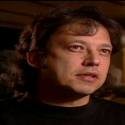May 19, 2014
Mask Associated With Sasquatch Lore Returned to B.C. First Nation
The tradition of sasquatch was transmitted to us by the First Nations of British Columbia. In particular, the Chehalis or Sts’ailes nation who reside near Harrison Mills, were the providers of much of the early sighting reports that J. W. Burns prolifically documented for posterity. I am extremely pleased about the repatriation of a sasquatch mask created by the late Ambrose Point to the Chehalis people. If you own Meet the Sasquatch or http://www.amazon.com/dp/0888396570/tag=cryptomundo08-20/ compiled by my good friend and colleague Chris Murphy, you will have seen Point’s mask which is clearly not human.
For decades the mask has resided at Vancouver Museum. I saw it in 2005 at Sasquatch exhibit created by Chris. It is a thing of beauty and a joy forever to quote,the poet John Keats.
The Victoria Times Colonist has provided the background to the repatriation of the mask.

A Sasq’ets mask, commonly know as sasquatch, is seen in this undated handout photo. Bigfoot sightings may be elusive, but a sasquatch mask missing for 75 years was easily found after a simple request from a British Columbia First Nation. THE CANADIAN PRESS/ HO, Museum of Vancouver
Hunting for an elusive sasquatch mask revered by a British Columbia First Nation has been a 16-year journey for James Leon, taking him through London, Boston, New York and Ottawa.
In the end, all it took was a question to the lady sitting next to him at a Vancouver event that led him to his nation’s Sasq’ets mask that vanished 75 years ago.
Leon was at a repatriation event for another First Nations artifact held by the Vancouver Museum when he asked the lady sitting beside him if she knew of the ape-like mask partially covered in bear fur.
“Her eyes lit up and she said ‘We were just looking at that mask the other day.’ And they were gracious enough to go get it for me,” he said with a chuckle.
The mask disappeared in 1939 from Sts’ailes First Nation, near Harrison Hot Springs in B.C.’s Fraser Valley.
Community elders told Leon that the mask had been taken by J.W. Burns, a teacher at the Chehalis Indian Day School, and a man obsessed with the sasquatch legend.
Burns, who is often credited for bringing the word “sasquatch” into common use, donated the mask to the Vancouver Museum.
Leon took the job of finding the mask seriously and learned it had been on travelling display. He searched through the archives of several museum’s known for having artifacts from British Columbia.
While all those elders are gone, he said they’d be pleased the mask has been returned.
“We do burning for the sasquatch. It’s our belief that his primary role is to ensure that the land is being taken care of. Because everyone of us, as Sts’ailes people, we carry an ancestral name, a rich name from the land.”
Read the rest of the article here.
 About John Kirk
About John Kirk
One of the founders of the BCSCC, John Kirk has enjoyed a varied and exciting career path. Both a print and broadcast journalist, John Kirk has in recent years been at the forefront of much of the BCSCC’s expeditions, investigations and publishing. John has been particularly interested in the phenomenon of unknown aquatic cryptids around the world and is the author of In the Domain of the Lake Monsters (Key Porter Books, 1998).
In addition to his interest in freshwater cryptids, John has been keenly interested in investigating the possible existence of sasquatch and other bipedal hominids of the world, and in particular, the Yeren of China. John is also chairman of the Crypto Safari organization, which specializes in sending teams of investigators to remote parts of the world to search for animals as yet unidentified by science. John travelled with a Crypto Safari team to Cameroon and northern Republic of Congo to interview witnesses among the Baka pygmies and Bantu bushmen who have sighted a large unknown animal that bears more than a superficial resemblance to a dinosaur.
Since 1996, John Kirk has been editor and publisher of the BCSCC Quarterly which is the flagship publication of the BCSCC. In demand at conferences, seminars, lectures and on television and radio programs, John has spoken all over North America and has appeared in programs on NBC, ABC, CBS, PBS, TLC, Discovery, CBC, CTV and the BBC.
In his personal life John spends much time studying the histories of Scottish Clans and is himself the president of the Clan Kirk Society. John is also an avid soccer enthusiast and player.
Email • Facebook • Twitter •
Filed under Bigfoot, Books, Cryptid Universe, Cryptozoologists, Cryptozoology, Folklore, Replica Cryptia, Sasquatch

